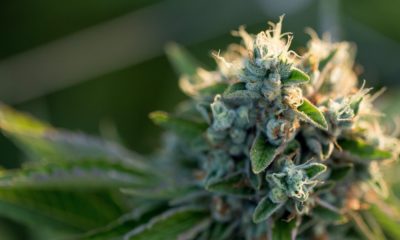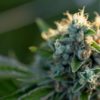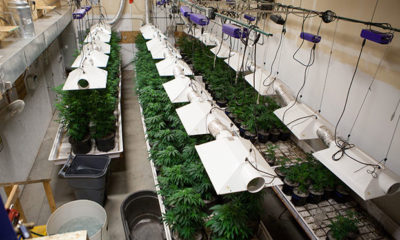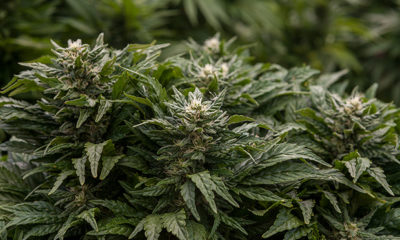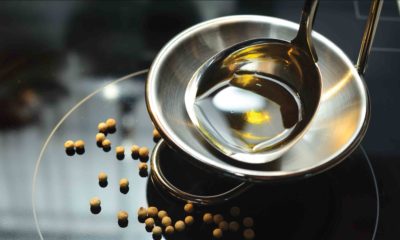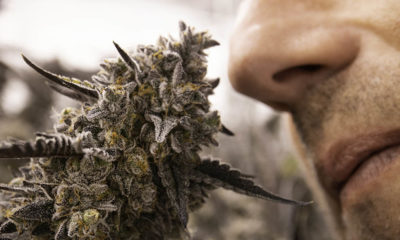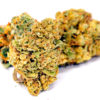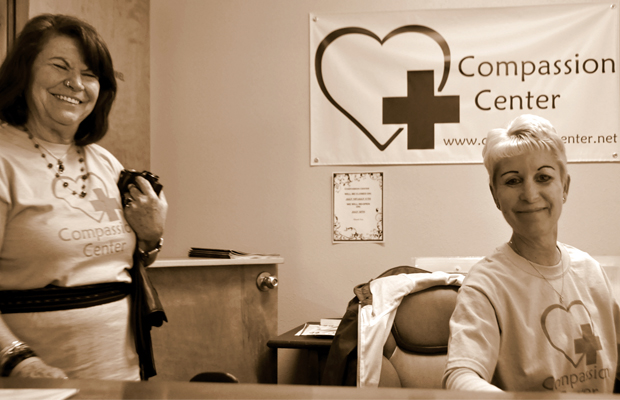
In The Magazine
Characteristics of Oregon Medical Marijuana Patients Served by Compassion Center
Compassion Center is a Eugene, Oregon based nonprofit medical marijuana clinic that has been serving patients throughout the state of Oregon for more than 10 years. We hold two clinics each week, where we provide physical exams by MDs and determine whether patients have qualifying, debilitating conditions under the Oregon Medical Marijuana Act (OMMA). We also provide educational services relating to the OMMA and help patients navigate the less-than-perfect system. We provide clinic services to nearly 1500 patients each year, as well as answering questions from people throughout the US, and assisting with paperwork for patients whose own doctors have signed for a medical marijuana card.
We did an online anonymous survey of patients in May 2011, using e-mail addresses that patients provided as part of our clinic registration information. We sent an initial e-mail, and then two follow-up e-mails to patients who had not yet responded to the survey. We received 141 complete survey responses—approximately 10% of our annual patients. All of those who completed the survey either had or were in the process of obtaining an Oregon medical marijuana card.
Limitations
Limitations of the survey included that only patients who had an e-mail that they had disclosed at registration were able to participate. This may have skewed survey results toward higher-income patients, who are more likely to be able to afford a computer or have more than limited access to a computer. In addition, our patients who are extremely ill may not have been able to complete the survey. Although the survey was anonymous, the federal legal status of medical marijuana may have had an effect on the veracity of responses; and we had to rely on self-reporting rather than objective determinations.
Demographics
All of the respondents were Oregon residents, two-thirds were male and more than 60% were age 50 or older, while none were under the age of 21 and only 5% were between 22 and 29 years old. This is an indication that medical marijuana patients, at least those who are served by Compassion Center, do not fit the common stereotype of reasonably healthy young men who just want to get “high.”
A quarter of patients indicated that they were US military veterans. Considering that veterans make up only 10% of the US population over the age of 21 (it is slightly higher in Oregon), the number of veterans being served by the Compassion Center is disproportionate to the population at large. This is not surprising, considering the physical and mental health issues they face.
Approximately 1/3 of those responding had a card for less than a year, 2.9% had cards for 9–11 years, and the remaining 60% were fairly evenly distributed over more than one but less than nine years. This is consistent with our patient pattern, which is about 2/3 renewals and 1/3 new patients.
We wanted to determine how many patients were eligible for the OMMP (Oregon Medical Marijuana Program) low-income rate, so we asked whether patients were on SNAP (food stamps) or OHP (Oregon Health Plan), making the assumption that individuals receiving the less than $700 in SSI benefits would also be participating in these programs. We found that 29% of patients were receiving SNAP benefits and 16% were on the Oregon Health Plan. This number was lower than we had expected, and is also much lower than OMMP percentages. (According to June data from OMMP, low-income cardholders account for about two-thirds of all cardholders).
We also wanted to get an idea of what percentage of patients received any kind of disability payment, because of our perception that a large number of those we serve are quite ill or disabled. Of those responding to the survey, 37% receive disability payments of some type. This number wasn’t surprising, because of the level of disability we see in the clinic. (This information is not tracked by the OMMP).
Qualifying Conditions
We knew from statewide statistics and our experience in dealing with patients that severe pain is the most common qualifying, debilitating condition for which patients use medical marijuana (often in addition to other conditions). Our survey found that 91% of respondents reported severe pain as one of their qualifying conditions, 33% had muscle spasms, 11% had severe nausea, 7% had glaucoma and 6% had cancer. None reported HIV/AIDS or cachexia, only 3% reported seizures and 1% reported agitation due to Alzheimer’s.
Other Conditions
For a number of years, individuals and groups have petitioned and requested that the OMMP add PTSD, anxiety and other mental health diagnoses to the list of qualifying debilitating conditions. We know, for example, that often patients— many of whom are veterans—use medical marijuana for relief of symptoms and conditions that are not covered by the Oregon statute, as well as those allowed under the law. We asked our qualified patients whether they used medical cannabis for other conditions that were not covered, and found the following results: 27% medicate for insomnia, 15% for PTSD, 31% for depression, 38% for anxiety and 21% for other conditions. (Note that patients may be medicating for more than one of these conditions). Only 36% of patients reported that they do not use medical marijuana for any non-qualifying conditions.
Other Treatments Used
Some individuals who believe that medical marijuana is harmful and has no medical use suggest that patients should try other modalities to control their conditions. (There is no dispute that other methods can also help, which is why Compassion Center developed the brochure “Alternative Pain Control Methods” for our patients with pain). Because nearly all patients tell us that they have tried other methods, we wanted to get an idea about what specific methods they had used to treat their conditions. We found that the majority of patients had tried one or more of these methods.
Responses were as follows:
Prescription Drugs 89%
Massage 56%
Chiropractic 46%
Meditation/deep breathing 46%
Dietary supplements 41%
Acupuncture 38%
Surgery 33%
Naturopathic medicine 26%
Other 17%
Harm Reduction
According to the Harm Reduction Coalition, “Harm reduction is a set of practical strategies that reduce negative consequences of drug use, incorporating a spectrum of strategies from safer use to managed use to abstinence.” Prior studies have shown the positive effects of medical cannabis as a harm reduction method, in that many patients use it to decrease or quit other substances. Compassion Center’s survey echoed these findings. (We knew this was occurring because many patients who come into the clinic state that they want to avoid taking opiates, or get off of opiates or other medications because of adverse side effects.) Only 23% of patients indicated that they had not used cannabis to help them decrease or quit other substances.
Of those who did use medical marijuana to decrease or eliminate their use of other substances, 66% substituted it for pain medications,18% for alcohol, 15% for tobacco, 2% for anti-seizure medication, less than 0.5% for methamphetamine or heroin, and 5% for other substances. These are impressive numbers that may make drug manufacturers shudder, but eliminating various pharmaceuticals has the potential to help patients with both their finances and their health. In addition, substituting cannabis for alcohol, tobacco, or illegal drugs can only have a positive effect.
Obtaining Medical Marijuana
Because the OMMP only allows patients to grow their own marijuana or have another person grow it for them, many complain that patients are unable to obtain their medicine. We provide a monthly class to educate patients on the law around this and to introduce growers and patients to each other, so we knew some patients had a problem growing or finding a grower.
In response to the question, “How do you most often obtain your medical marijuana?”, 37% indicated that they grow their own and 44% that they obtained it from a grower—which is a total of 81% of our patients for whom the current system is working. Less than 1% reported that they purchased it from a dispensary, 4% bought it on the black market, 6% received it from other patients, 2% belonged to a cooperative, and only 6% reported that they were unable to obtain medical marijuana.
On the survey question that asked patients how difficult they found it to obtain medical marijuana, more than half reported that it is somewhat or very easy, while only about 22% found it somewhat difficult and 7% found it very difficult. This 7% is consistent with the 6% who reported that they are not able to obtain medical marijuana. This number is smaller than estimates that were bandied about to show the need for dispensaries, but they do show that for a percentage of medical marijuana patients the current system is not working.
One other way that the OMMP allows patients to obtain medical marijuana is from another patient who is either growing it or has a grower and is able to obtain more than they need. In response to our question “Do you help any other patients by giving them excess medical marijuana?”, about 47% said yes, while about 53% said no. We didn’t ask about why or why not, but clearly this aspect of the OMMP is working for some patients. (It would be interesting to learn whether this changed after threats from the federal government led some medical marijuana related organizations to eliminate programs that coordinated the exchange of medicine between patients.)
Method of Use
There is a belief, perpetuated by the media and those opposed to medical marijuana, as well as its historical use, that medical cannabis is only used by smoking. Many people—even physicians—who are not involved in the field are not even aware that medical cannabis can be administered other than by smoking. Compassion Center advises patients not to smoke cannabis if at all possible. This is especially true for those with chronic lung or immune system diseases. In order to determine whether this advice is working, we asked our patients “What method do you use or plan to use for taking your medical marijuana?” The results show that most patients use multiple methods, and that vaporizing and edibles are just as common as smoking.
The survey showed the following percentages for each method:
Smoking 69.5%
Vaporizing 69.5%
Edibles 69.5%
Tincture 29%
Hash, honey or Rick Simpson oil 23%
Ointment or lotion 18%
Recreational Use
One of the claims made by law enforcement in Oregon is that the OMMP is just a cover for recreational use of marijuana. We are aware that this may be true in some cases, but our experience didn’t lead us to believe that it was more than a minor problem. Many patients who come to Compassion Center tell us that they haven’t used marijuana at all, or since they were younger when they experimented. We also get a lot of requests from patients who want the relief that they believe they will get for their symptoms, but do not want to get “high.” So our survey asked about recreational use of marijuana. Backing up these anecdotal reports, we found that nearly 85% of respondents reported that they do not use marijuana recreationally—a direct contradiction to law enforcement allegations. Another important point is that even if 15% of patients use cannabis recreationally, that alone does not invalidate their medical use.
Conclusion
This survey was a preliminary effort to ascertain who our patients are and how they use medical marijuana. The results reinforce much of what we already knew based on individual patient reporting and adds new information to our knowledge base. They also show that the claims and biases of law enforcement and others about who medical marijuana patients are and why they use this medicine are not really accurate. It also gives us a great starting point for learning more about where the Oregon Medical Marijuana Program and our services are working and failing, and how we can better serve our patients.
First appeared in Issue 3 of Cannabis Now Magazine.



